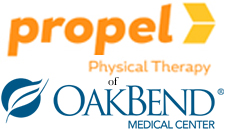Over the past 10 years, I have seen a large number of clients following rotator cuff repair. The protocols from various surgeons are all over the place, and rightfully so, depend a great deal on what the surgeon saw during the procedure – size and location of tear, soft bone, tissue quality, tendon retraction, etc. All of these things have an impact on post-op rehab.
Some surgeons want the client seen the day after surgery, while others wait 3-6 weeks. Some recommend a sling for 1 week, while others recommend using a sling for 4-6 weeks. As we can see there is no consensus on these matters, but the good news – PEOPLE GET BETTER.
I recently came across this article in the American Journal of Sports Medicine –
In a nutshell…
The authors of this study reviewed 6 randomized controlled trials consisting of 482 patients. They compared outcomes of those receiving early versus delayed range of motion (ROM) after rotator cuff repair. Those receiving early ROM had 3.5 degrees greater forward flexion (reaching overhead) ROM at 12 months post-op. However, the early group also had a higher incidence of re-tear, especially if they had a large tear.
In my experience, I haven’t seen much difference in outcomes of those with small to medium tears who start PT the day after surgery or 4 weeks after surgery; those starting the day after surgery are just less excited to see me:) I do agree that large tears need a little more time to heal before beginning the rehab process.


Leave A Comment
You must be logged in to post a comment.